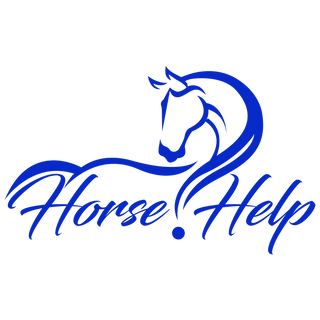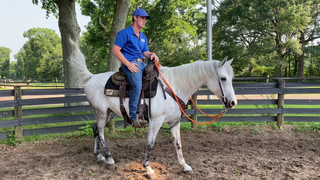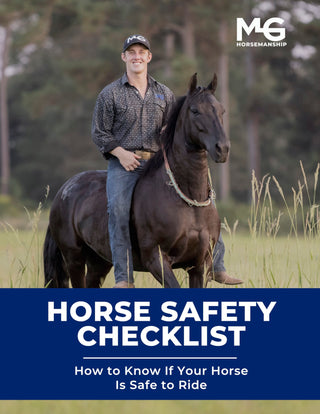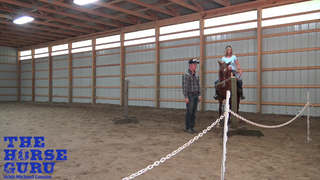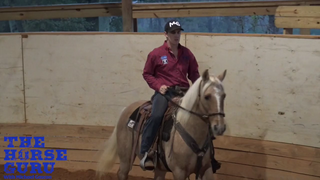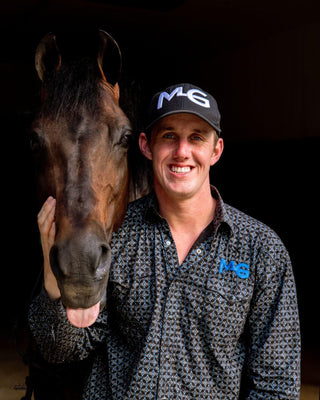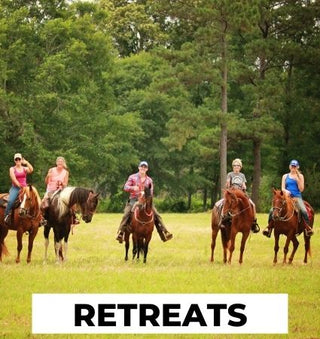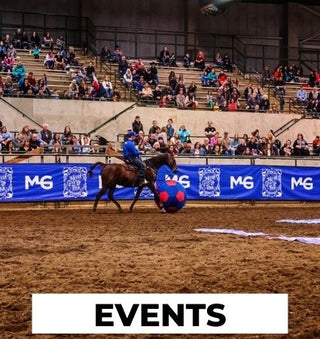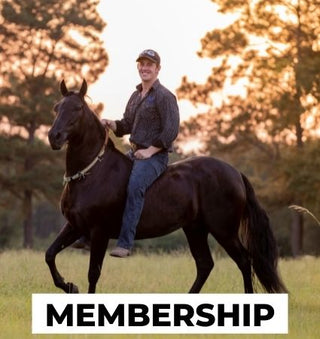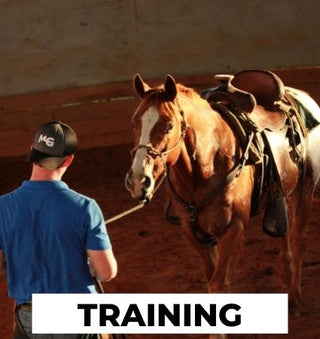Watch the Video Here or continue reading below!
The jog trot is more than just a gait—it's a vital training tool for calming a hot horse, refining cues, and building a responsive, balanced partner. In this post, we’ll break down the importance of the jog trot, how to teach it, and what makes it such a powerful step in finishing a horse.
What Is the Jog Trot and Why Does It Matter?
The jog trot is a slow, steady gait that sits just above a walk in speed and energy, but far below the intensity of a long trot or canter. It’s a foundational gait where the horse’s motor isn’t “on fire,” allowing them to stay relaxed and responsive.
“The importance of the jog trot is being able to make different maneuvers with your horse very quietly in the mind.”
Horses coming from high-intensity disciplines, like endurance, often struggle to calm down. The jog trot gives them a mental and physical reset.
Meet Henry: From Spastic to Soft
When Henry, an Arabian gelding, arrived at the ranch 30 days ago, he was stressed, reactive, and unbalanced.
-
His head and tail were high.
-
He had no concept of collection.
-
His adrenaline was always pumping.
-
He couldn’t relax or handle pressure calmly.
He was used to moving fast but not with softness. That’s where the jog trot came in. Our goal was to retrain his brain and body to stay connected at a slower, more deliberate speed.
Getting the Horse Ready for Jog Trot Work
Before asking for a jog trot, it’s essential that the horse already has:
-
Respect and groundwork training
-
Confidence on trails and with obstacles
-
Softness in the bridle
-
Control with both one hand and two
By this stage, the horse should already be "broke" in the sense that he listens and goes where asked—now it's time to refine and finish.
Body Position: Ride Like You Want the Horse to Move
Your body influences your horse more than your hands. To shape Henry into a collected jog trot, I focused on riding the way I wanted him to move:
-
Sit over the hindquarters to lower the shoulders.
-
Round your lower back to encourage the horse to round his.
-
Point your toes down and lift with your spurs to pick up the horse’s belly and drop his head.
This isn’t glamorous work—it’s technical, deliberate, and often overlooked. But it’s what creates a soft, quiet, broke horse.
Shaping the Jog Trot: Cueing and Releasing
As Henry started to find his jog trot, I worked on:
-
Turning with inside leg cues while keeping the feet moving.
-
Using subtle rein and leg combinations to adjust direction and posture.
-
Releasing the moment he gave me what I asked—especially when he dropped his head or powered down.
“You want a horse that can move around with the motor turned off.”
The jog trot becomes the perfect place to educate the horse at a low speed, without the high-energy tension that comes from faster gaits.
Reaping the Benefits of the Jog Trot
With consistency and correct cues, the jog trot brought massive improvement:
-
Henry began reaching for the ground, relaxing his neck and spine.
-
He could turn, stop, and back up softly.
-
His mind slowed down, and he became much easier to ride.
This gait became the place where all the finesse and subtleties of training could be taught—and the horse could actually hear the message.
Why Every Rider Should Use the Jog Trot
Whether you're working with a green horse or refining a seasoned one, the jog trot is an invaluable tool. It creates:
-
Relaxation through movement
-
Responsiveness to subtle cues
-
A calm, collected frame
-
A better mental connection between horse and rider
So, if you want a horse that’s truly broke—quiet in body and mind—don’t skip the jog trot work. It’s where the magic happens.
